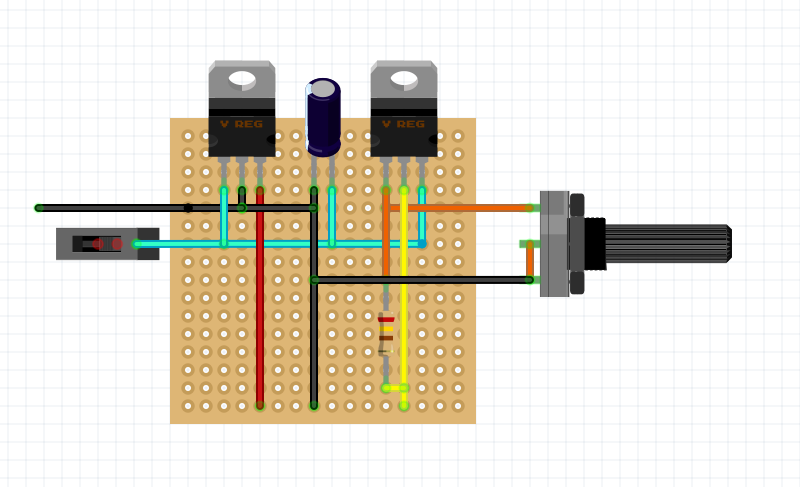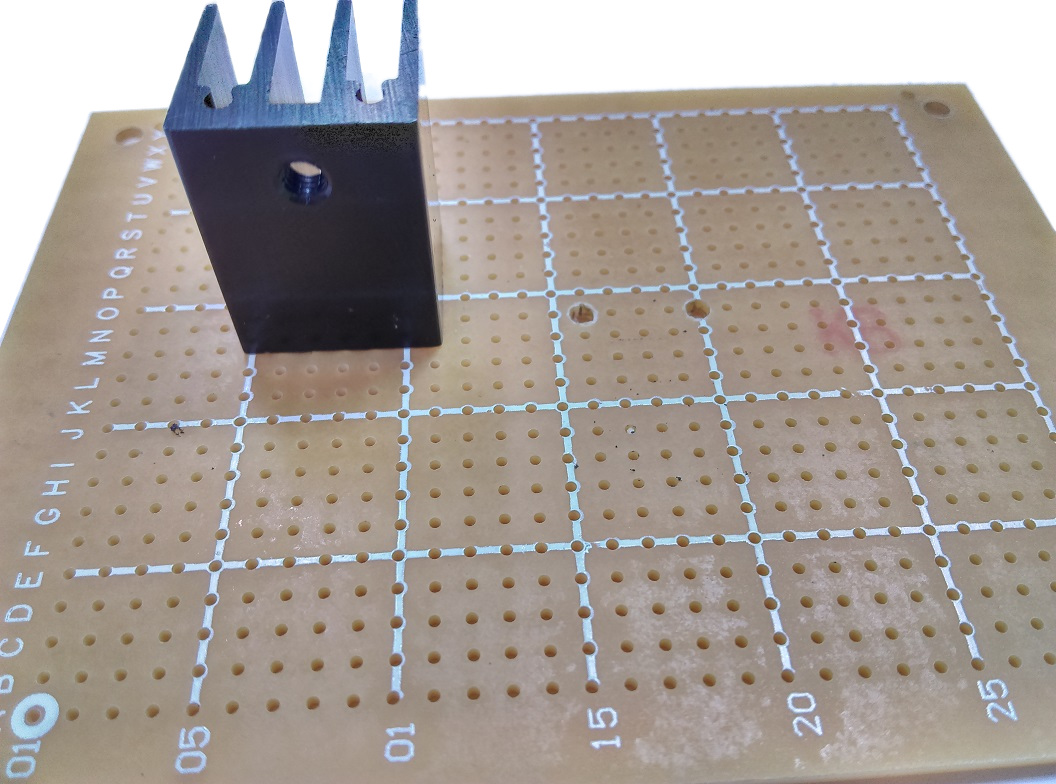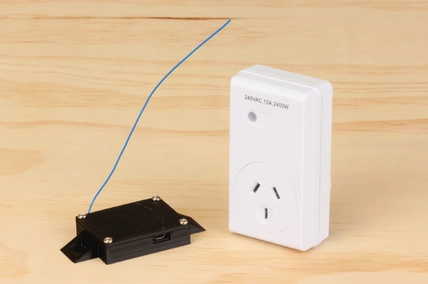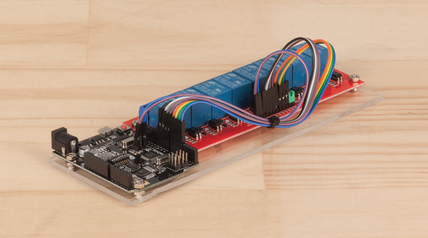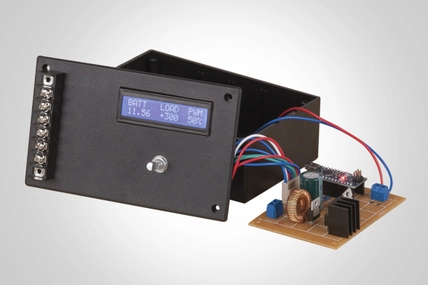We have provided a cutout file for both of our projects this month, so feel free to print out (or, if you're very nice, you can ask the store to print out for you) a cutout sheet, and use some cheap glue to keep the paper in place while you drill and cut into the Jiffy enclosures. This will help get the sizes just right.
Cutouts.pdf
While we haven't used it, we've heard post-humorously that the TH1768 is great for this, and we'll be trying it next time we're modifying a Jiffy box.
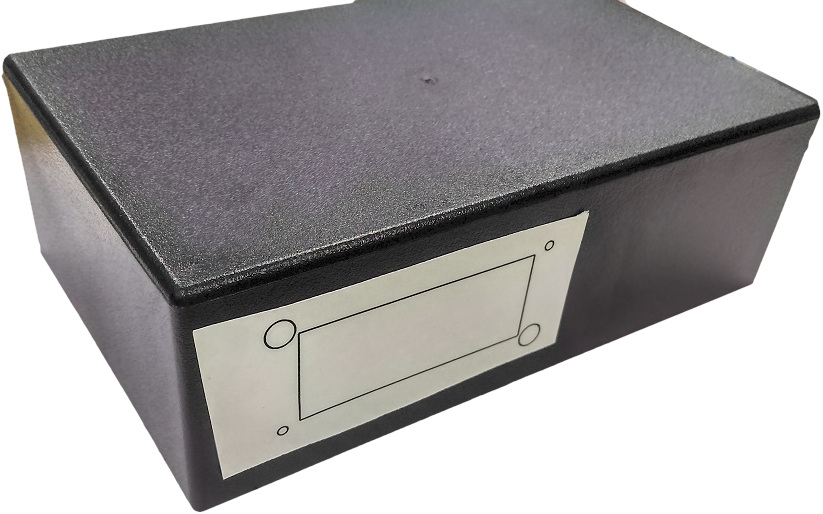
Once it on, try drilling some of it out, or use a band-saw or similar to carefully cut around the outline of the display.

You can then place and drill out the remaining components, which are all circular.
|
|
|---|
DC Jack | 10mm |
3x Banana sockets | the PS042X series is 10mm |
Potentiometer | 10mm |
Power Switch | 5mm |
As you could already see, ours turned out like this, with a DC jack coming from the side:
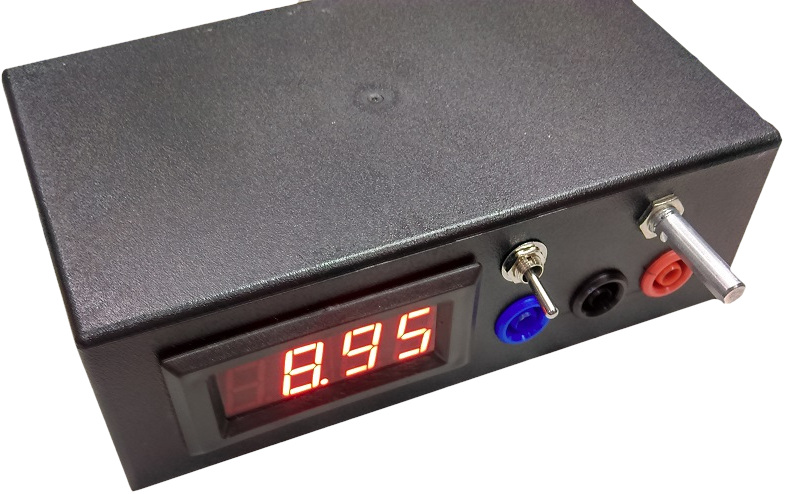
When connecting up the circuit board, make sure no part of the circuit is touching any other part it shouldn't; shorting these components have the potential to cause a bit of a bang.
Once the minimal circuit is connected up, Test the voltages you get from the regulators before you continue on placing everything in, as it will be easier to fix problems now, rather than later.
Once the regulators are regulating, you can then attach wires from the outputs to the QP addon board as shown:
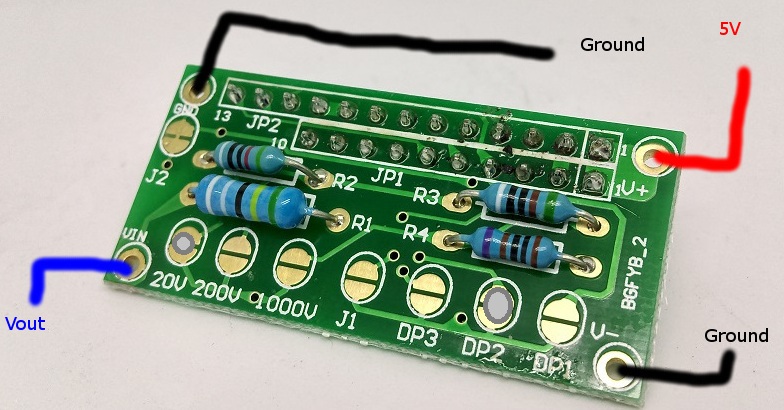
You also need to bridge solder over the 20V and the DP2 pads. this is so the module knows what it is displaying and we know what it's reading. We've made little MS-paint solder so you can see.
When the LCD Panel is mounted to the chassis, the addon module connects directly onto the pins of the LCD module, using the shorter row of pins, and being the leftmost pin.
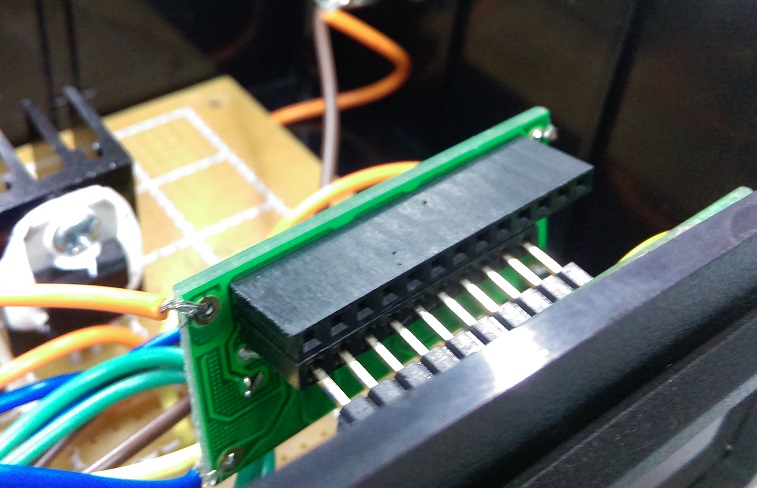
Then, finally, connect the DC socket, Switch, Banana sockets, Panel Meter and potentiometer. Here's a block diagram to help you figure out how it all comes together
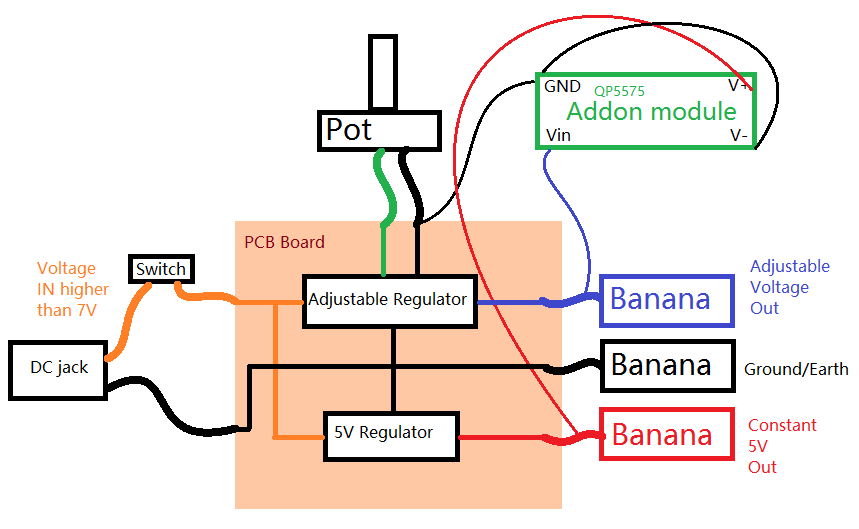
Unfortunately we didn't have much planning before we built this, so our final result ended up being a bit of a mess,
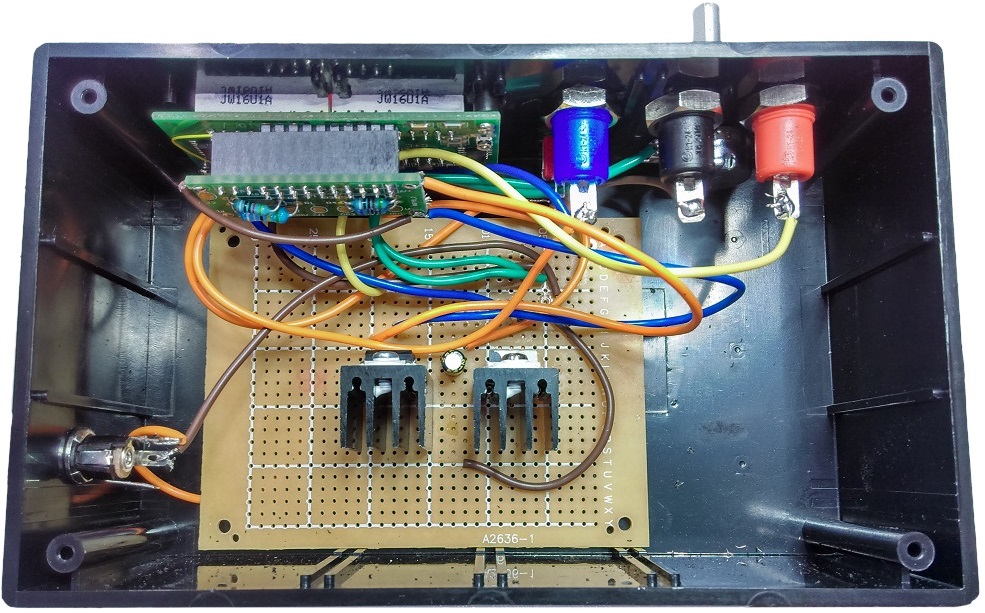


.png?branch=uat_new)
